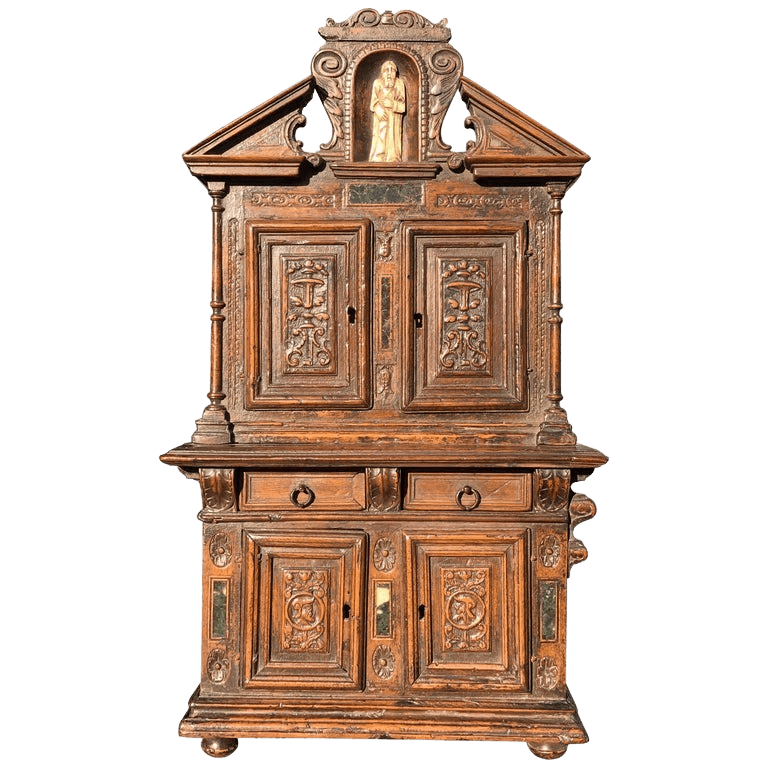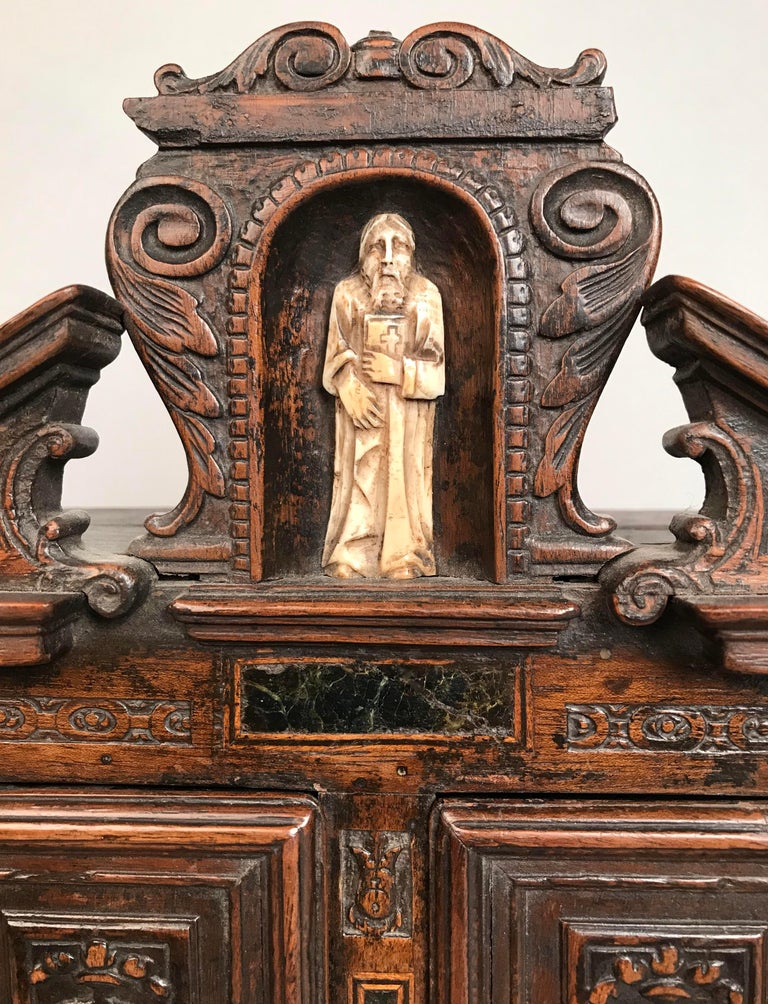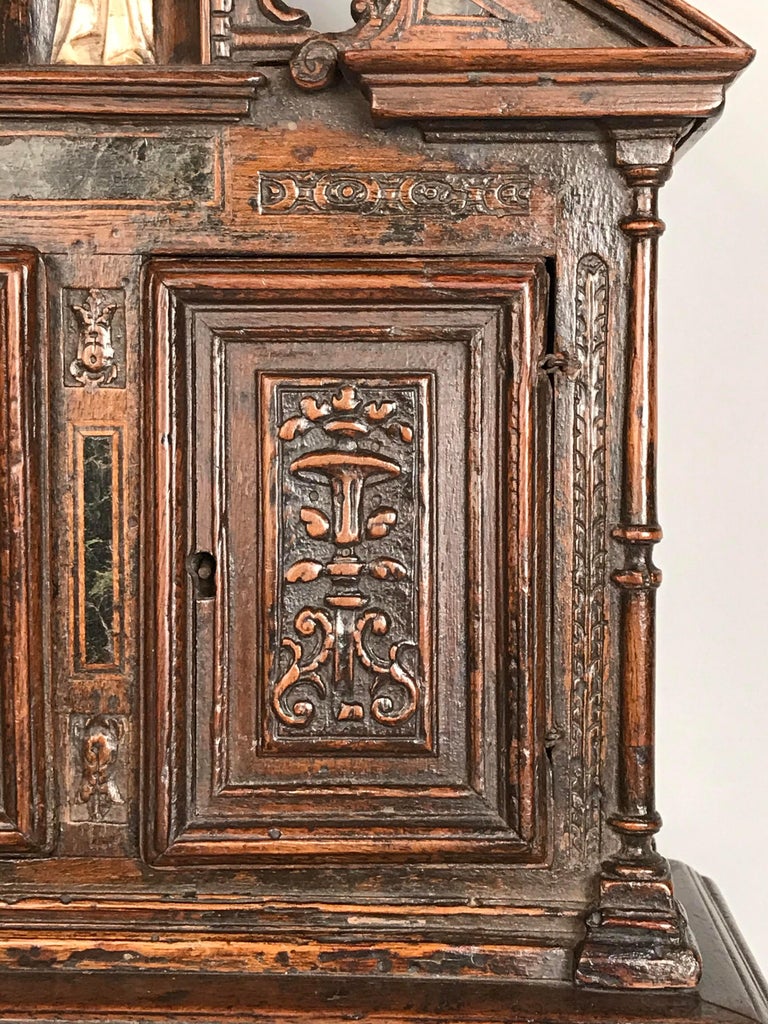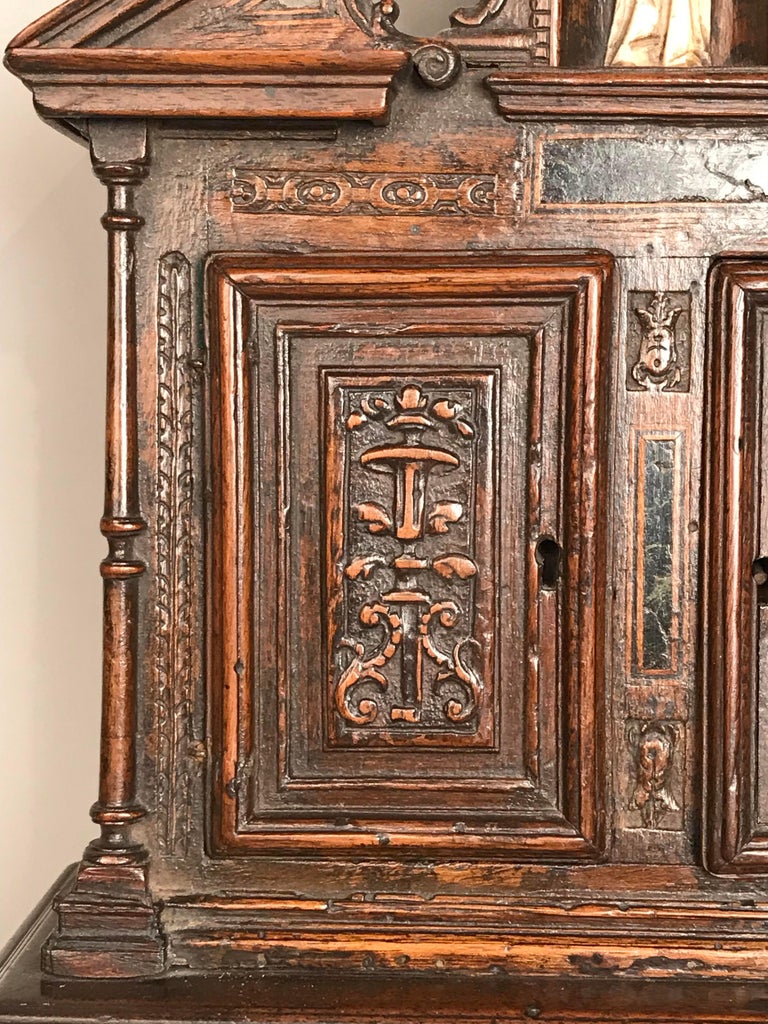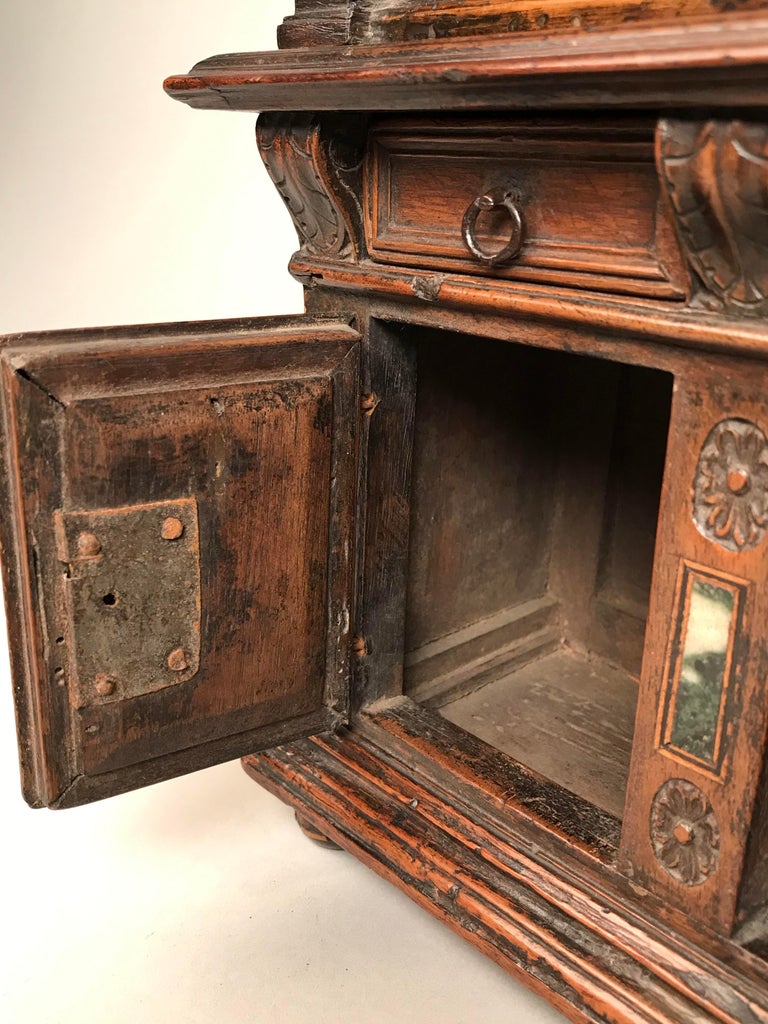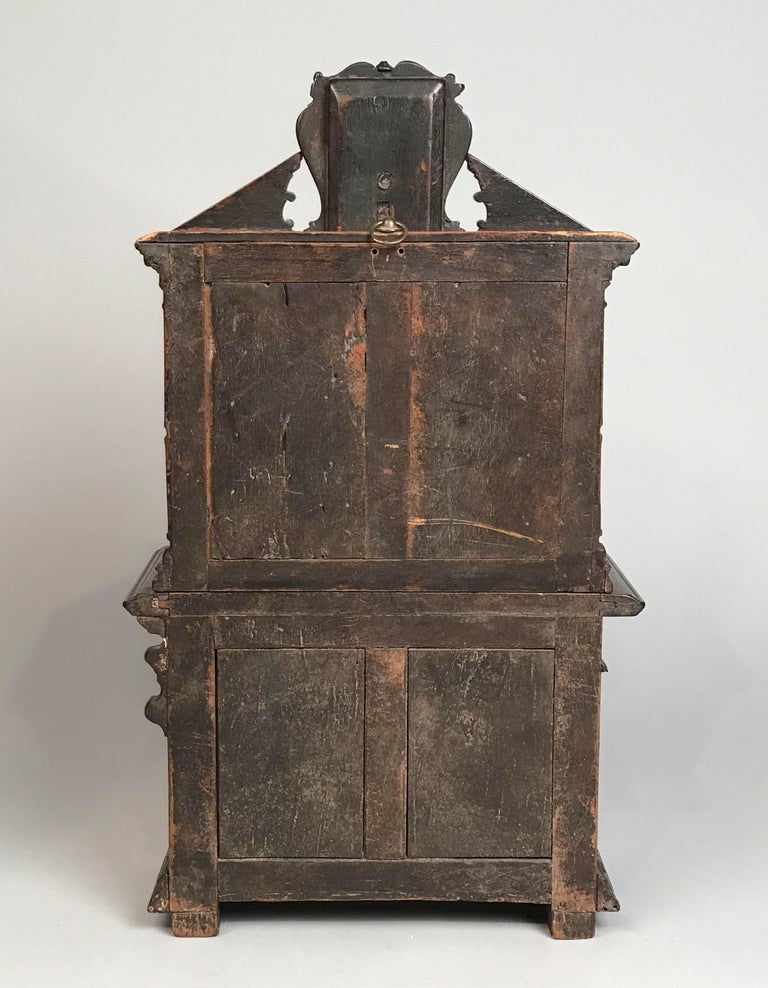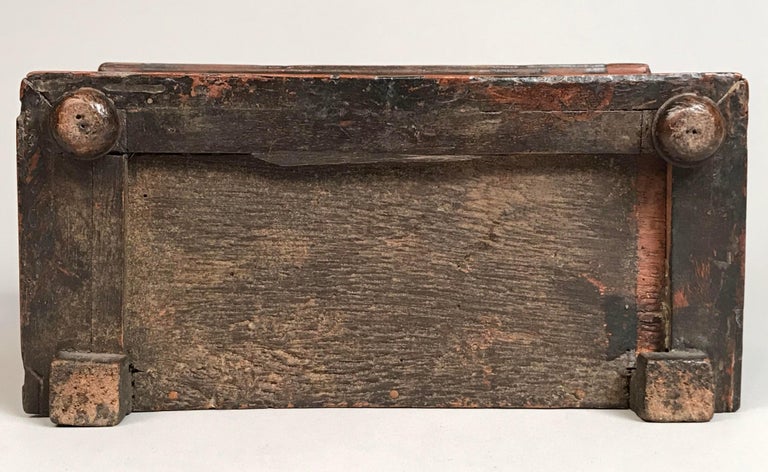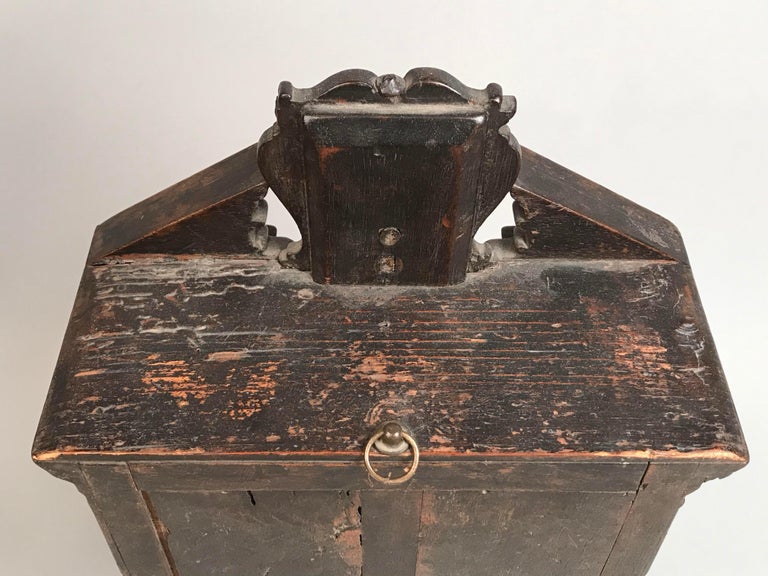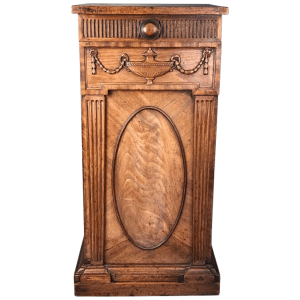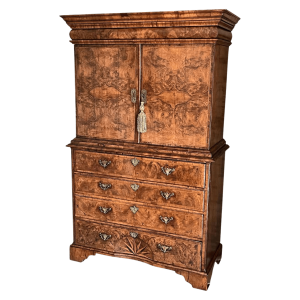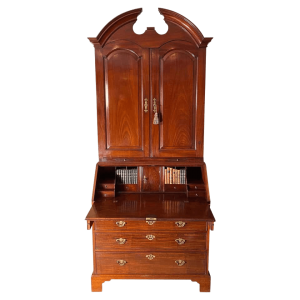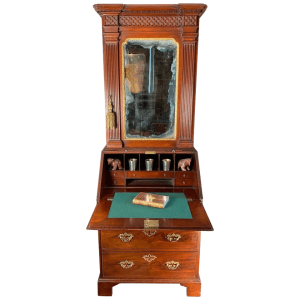Description
An extremely rare French carved walnut miniature meuble à deux corps. Henri II period (1519-1559).
This sixteenth century French cabinet is inlaid with variegated marble panels, and is of distinctly architectural design characteristic of the Renaissance style. The carvings of bizarre helmeted masks set in formalised foliage are a classic example of ”grotesque” decoration derived from the arts of antiquity. The doors carved with arabesque foliation. Between the broken-arch pediment is an arched recess containing a carved bone figure*.
Some minor losses.
Bearing an old label:
Buffet Henri II à deux corps. Renaissance.
Style Androuet du Cerceau (Livre: ‘Le Meuble en France’ par Jacqueline Viaux) [Cartonné, 1962].
This form of richly-carved cabinet with a smaller upper section set back is characteristic of French furniture of the late 16th century.
Vis. D. Dubon in the Frick Collection, an illustrated catalogue; ‘Furniture vol. V’, New York (1992) pp. 117-123. Such cabinets were described in an inventory drawn up as early as 1596.
Refs:
*The bone throne of Maximianus in the Museo Nazionale, Ravenna, Italy, depicts bone carved figures of John the Baptist and the four Evangelists
in arched niches. One of these figures shows great similarity to the carved figure in this important miniature armoire à deux corps.
The Sala dei Pappagalli in te Palazzo Davanzati, Florence, Italy contains many items of fine furniture of the sixteenth century Renaissance period, amongst which is the only example we have been able to locate of early Italian miniature furniture. In over 64 years in the business we have not seen another one.
A similar full-scale cabinet is currently for sale priced at £37,300. A miniature is much rarer. This could have been a journeyman’s cabinet-maker’s sample to show prospective patrons before ordering a full-scale version.
Bibliography:
Percy Macquoid R.I. in ‘A History of English Furniture, The Age Of Walnut’, Vol. 1, states ”for sheer symmetrical beauty and for architectural perfection in the proportions of buildings, there is no equal to the Henri ll period”, Bracken (1904-1908).
Vis:
Important Early European Furniture, Christies, 9th November 2006, lot 286, est. £30,000 – 50,000.
This important meuble à deux corps displays highly decorative carving typical of French cabinet-making of the 16th century.
Also note a meuble à deux corps illustrated in J. Boccador, ‘Le Meuble Francais du Moyen Âge à la Renaissance’, St-Remy-en-l’Eau (1988) p.189.
Alcouffe Daniel, Dion-Tennenbaum Anne, ‘Lefébure Amaury, Le Mobilier du musée du Louvre’, t. 1, Paris, Éditions Faton (1993) pp. 40-43.
‘Un Temps d’exubérance. Les arts décoratifs sous Louis XIII et Anne d’Autriche’, [sic], Paris, Éditions de la Réunion des musées nationaux (2002) pp. 226-227.
Jacques, I – Androuet du Cerceau – https://en.wikipedia.org › wiki ›
https://www.meubliz.com/artiste_designer/jacques_androuet_du_cerceau



